After a pleasant night in the local hotel, we climb into the back of a pick-up truck and are driven to Don Omar. His “Finca Flores” is 42 hectares big, around 10 times larger than that of Doña Magdalena.
Omar tells us about the rural exodus: in Colombia, too, people prefer to live in the city, where they hope to find work, rather than grow or harvest coffee for a pittance. Since coffee is traded on the stock exchange, the price of coffee in Colombia is also influenced by how the harvest turned out in other parts of the world. And currently, due to a good harvest in Brazil, the price of coffee is so low that no profit can be made. Only those who are certified fair trade or organic can still earn enough to ensure their survival. At the same time, the consumption of so-called specialty coffee is increasing. Specialty coffee means on the one hand special varieties, but also single origin, i.e. coffee that only comes from one place and is not blended with coffee from other places. In the meantime, there are even mircolot coffees, which are coffees where only the coffee of a single farmer or even a single lot ends up in a bag. To achieve this, the farmers not only have to cultivate and pick pure varieties, but the entire transport process must also be carried out in such a way that no blending takes place. A lot of effort – which has to be paid for. One kilo of Specialty Coffee can cost as much as 30 euros. At first glance, this seems a lot, but in the end it is a good deal when compared with the polluting Nespresso capsule coffee, which is around 60-80 €/kg.[1].
More and more producers and cooperatives in Colombia are turning to specialty coffee, hoping to earn a higher price in the end due to the better quality. This is also the case with Don Omar: during the tasting, the professionals of our group find one coffee particularly tasty, although it has a hefty purchase price of over 20 €/kg. The roasters cast appreciative glances at each other – delicious! But too expensive to make enough profit in Austria or Germany.

What makes the coffee here, and also at Doña Magdalena special, is the shade cultivation. The coffee plants grow in the shade of larger and smaller trees such as cambulos and ocobulos. This makes the care of the plantations more elaborate and in the end the quality of the coffee better.
This form of cultivation is particularly advantageous for the soil because of the biodiversity. Among other things, this means that the plants are better protected from disease. For every 20,000 coffee trees, there are 600 shade trees and 100 banana plants.
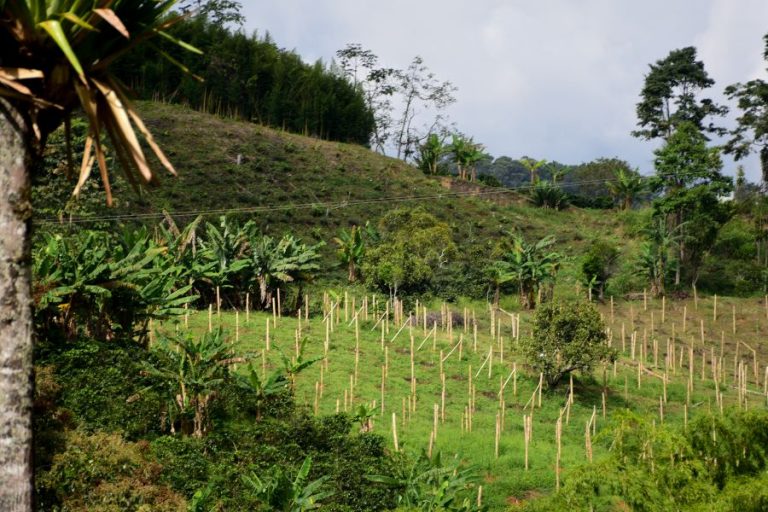
The large, deep-rooted trees also help to stabilise the sometimes very steep cultivation slopes, but at the same time they make it easier for moulds to spread. And there is another problem: climate change is also noticeable in Colombia. There are longer dry seasons than in the past, but more intense rainfall in other seasons. Overall, the weather extremes have become greater, which leads to fluctuations in the coffee harvest. It is of little help that the bananas and platanos (a type of plantain), as well as the cultivated cocoa, generate a small additional income.
So much for the coffee farmers themselves. But what about the pickers?
What do they earn? Unlike most coffee plantations, Omar pays per day and not per kilo. This way, he says, he can ensure better quality. Because if the picker is paid per kilo, he is always tempted to pick the coffee cherries that are not quite so ripe. And especially with the high prices of specialty coffee, quality is extremely important. A picker can pick 80 kg in one day, for which he receives about 38,000 pesos (the equivalent of about 10 €). If someone brings him 100 kg, he becomes suspicious.



On the finca, the pickers are offered the opportunity to eat, but it costs them 10,000 pesos a day. A quarter of the daily income for food. That seems like a lot, but I don’t find out how many pickers would rather feed themselves and whether they would even have the opportunity to do so in the communal accommodation – which now seems deserted and dusty in the low season.
For Omar and his family, coffee growing seems to be a reasonably profitable business. We visit his sister, her children and his mother in their “summer cottage” on the finca – it is colourful and full of flowers.
But coffee cultivation is not profitable for everyone here in the region – his neighbour uprooted his coffee plants and bought a cow. Some of our group look uncomprehending – how can you do that? Someone else thinks it’s understandable, because the cow just goes into the shade when it’s too hot. The low price of coffee this year does the rest. This way more and more coffee growers give up on growing the beans and turn to other sources of income.
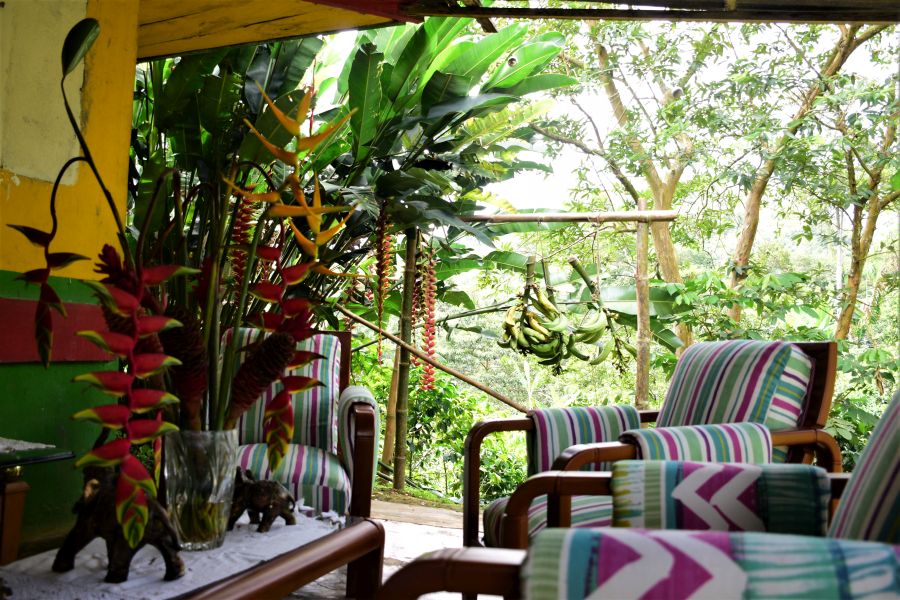
That is why it is worthwhile for producers like Omar to trade directly with importers from Europe. In most contracts, 60 % of the price is paid in advance so that Omar can pay the workers. The remaining 40 % is due once the coffee arrives in Europe. The advantage for the importers is that they usually get better quality with direct trade and, moreover, for many customers in Europe, the stories of the growers are a selling point.
But these stories are filtered, of course. They are the success stories of Doña Magalena and Don Omar. Both educated people who actually live or lived in the city and see coffee growing either as an investment or as a hobby.
People don’t talk about the small farmers with up to 3 hectares who received financial support to convert to organic farming. Although it was a government project to enable ex-guerrillas and ex-paramilitaries to earn a legal income.
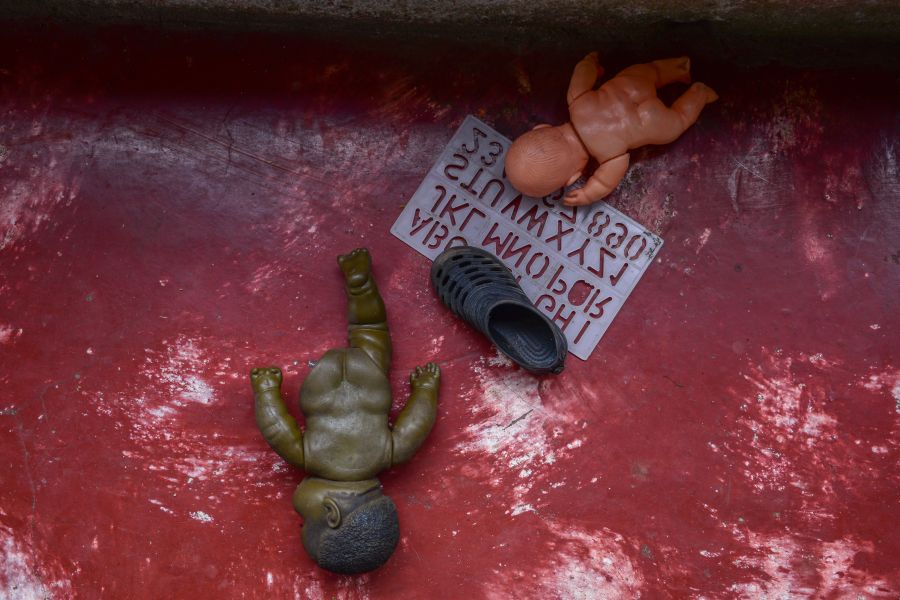
On Don Omar’s, finca no one explains the story of the Venezuelan couple who live there and keep things in order. Not a word about the small, rather unkempt kitchen with sooty walls from the open fire. The two of them stay in the background during our visit. The TV is on while their little daughter plays on the floor. No one explains their story. And I don’t interfere, I just watch the two of them and don’t ask about it.
Omar does mention it in passing. Because he can hardly find anyone in Colombia who wants to live so secluded and take care of the finca, which looks rather deserted in the low season. It is clear that the Venezuelan couple had to flee their home country, once one of the richest countries in Latin America, because there was great poverty due to political crisis and mismanagement. Now they have found temporary work and shelter here, but what does that mean for them? I do not know.
Nevertheless, Don Omar’s coffee is good, and the story around it is also well received by the coffee roasters from our group, some of whom would like to buy coffee from him. And that’s what we’re here for, after all. We negotiate the conditions for possible deliveries to the port and then we are on our way – back to Bogotá, the capital of Colombia.
On the way, we stop at a small village with the typical colourful houses, visit a waterfall, take a few photos and try a sweet cream made of coffee.
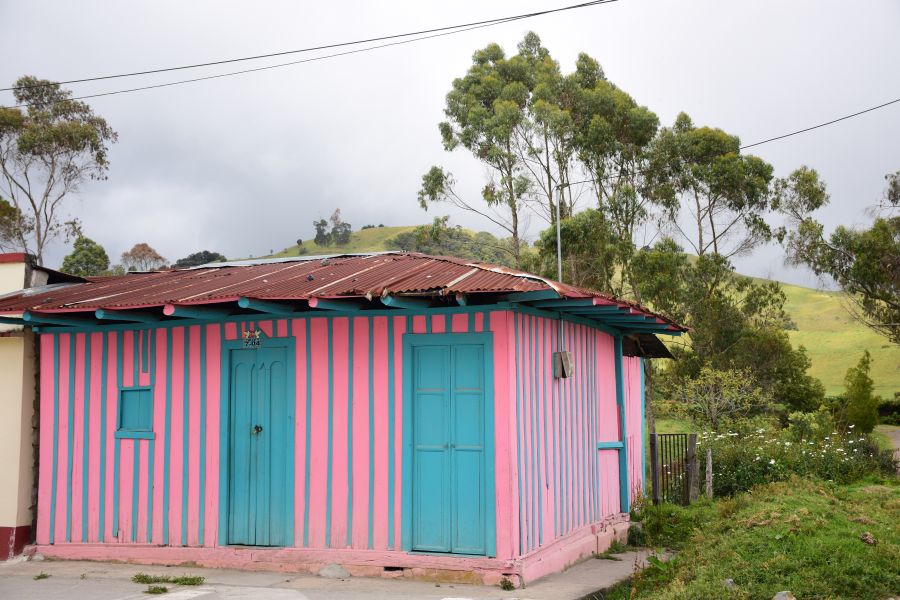


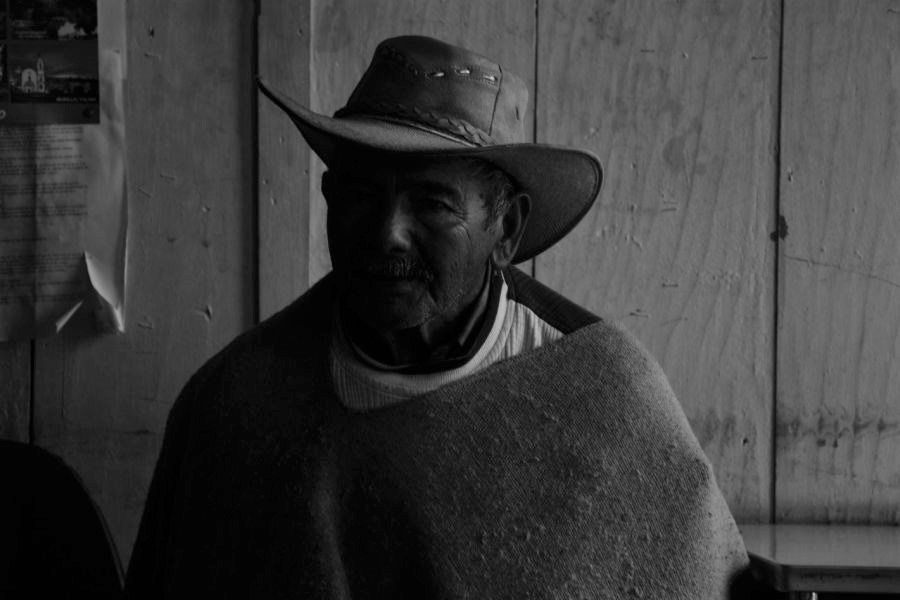
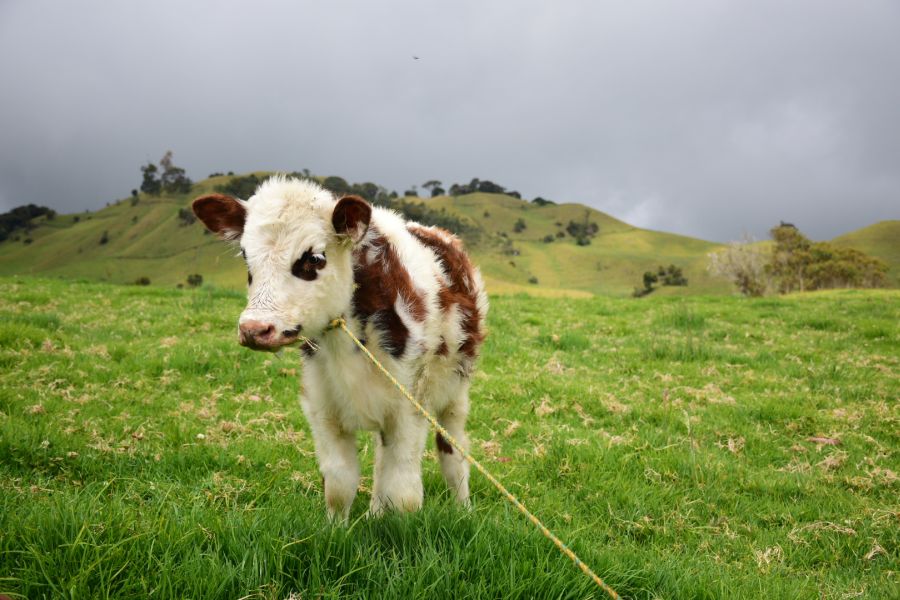
In Bogotá we have a one-night stay before we fly onto Pitalito in the state of Huila the next day, in the south of Colombia.



